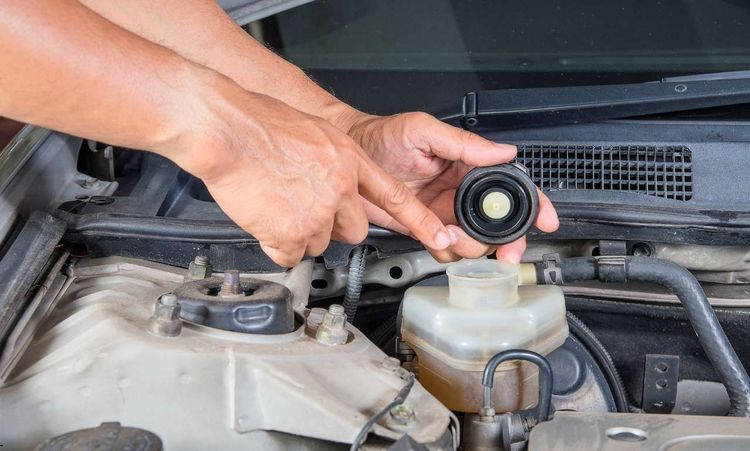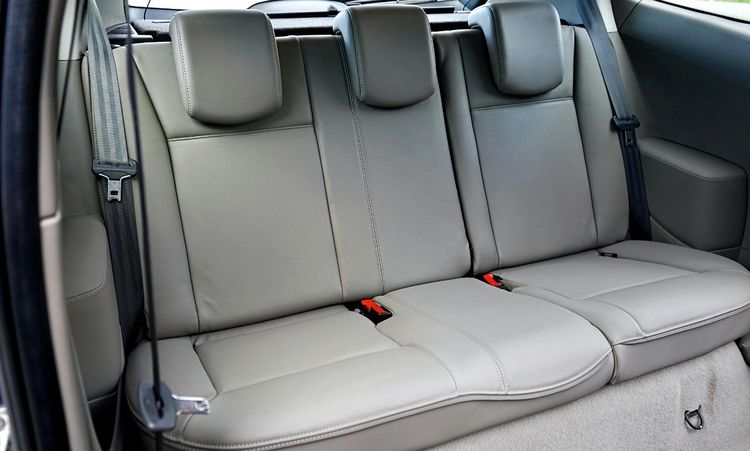No one enjoys car troubles. Whether you're headed to work or planning a road trip, breakdowns kill the vibe. That’s why routine maintenance matters. It helps you avoid costly repairs and keeps your car feeling brand new. This guide lays out 7 secrets to make sure your vehicle stays in top shape. These tips are simple, practical, and easy to apply for any driver.
Understanding your vehicle isn’t just for mechanics. Every car owner should know how to extend a car’s lifespan and improve fuel efficiency. Keeping your ride smooth isn’t rocket science. Just a few consistent habits can make all the difference.
Regular Brake Checks
Your brakes do more than just stop your car. They protect lives. Worn-out brake pads or low brake fluid can lead to disaster.
Understanding Brake Health
Brakes wear out slowly, so many drivers don't notice the decline. The squealing sound? That’s your car’s way of saying, “Help.” If you hear grinding or your car pulls to one side when braking, get it checked. Brake fluid also breaks down over time. Moisture seeps in, reducing its effectiveness.
A soft or spongy pedal is never normal. That could mean air in the brake lines or a leak in the system. Ignoring small signs leads to big problems.
Schedule brake inspections twice a year or follow your car's manual. RAC patrol expert Chris Burgess recommends checking after long road trips. Don’t rely on feel alone. A professional inspection ensures the entire system—pads, rotors, and brake fluid—is working properly.
Oil Changes and Fluid Checks
Changing your oil on time is non-negotiable. Neglect this, and you’re gambling with your engine's life.
Why Fluid Levels Matter
Engine oil keeps moving parts cool and lubricated. Dirty oil causes wear and buildup. Stick to your service schedule. Don't guess—use the dipstick or oil life monitor. Use manufacturer-approved motor oil for best performance.
Transmission fluid is just as vital. It helps gears shift smoothly. If it’s dark or smells burnt, change it. Brake fluid, washer fluid, and power steering fluid all have roles. Low fluid levels can cause steering stiffness or braking issues.
Always keep an eye on coolant. It prevents your engine from overheating. Check for leaks under the car or around the radiator. Top up with the right mix if needed. Washer fluid might seem minor—but you’ll miss it when your windshield’s covered in bugs.
Fluid checks only take minutes. But they protect complex—and expensive—vehicle systems.
Tyre Maintenance for Road Safety
Tyres connect your car to the road. Their condition directly affects safety, handling, and fuel efficiency.
Tyre Pressure and Tread Depth
Under-inflated tyres wear faster and increase fuel use. Over-inflated ones reduce grip. Use a gauge to check pressure monthly. Always follow the recommended PSI found in your owner's manual or door frame.
Check your tread depth regularly. Stick a coin in the groove—if you can see the rim, it’s time for a new tyre. Low tread means poor grip, especially on wet roads.
Rotate your tyres every 5,000 to 7,000 miles. This ensures even wear. Don’t forget your spare tyre either. It needs proper pressure too.
Worn tyres are dangerous. Don’t let them sneak up on you. Set calendar reminders or check them every time you fill up on fuel.
Don't Ignore Warning Lights
Warning lights aren’t decorations. They’re your car’s way of screaming for attention.
The Meaning Behind the Lights
The Check Engine Light doesn’t always mean disaster—but it never means nothing. It could be a faulty sensor or something more serious like a failing catalytic converter.
Other important lights include oil pressure, battery, and ABS. These alerts warn about engine trouble, charging system failure, and brake issues. If any light flashes, pull over. A solid light means schedule service soon. Flashing? That’s urgent.
Ignoring lights leads to costly repairs. Diagnostic tools at an auto parts store can read codes for free. Get them checked sooner rather than later.
Don’t Skip MOT Test Preparation
Skipping MOT prep is a recipe for failure. The annual test isn’t just a legal formality. It checks your car’s roadworthiness.
Getting Ready for Your MOT
Start with basic checks. Test your headlights, brake lights, and indicators. Replace dead bulbs right away. Top off fluids like brake, power steering, and washer fluid.
Windscreen wipers should be clean and functional. Cracks or chips in the windshield can cause failure. Check mirrors too—they must be securely attached and clear.
Ensure tyres meet legal tread depth. Don’t forget the horn. It must work and be loud enough.
Clear out any clutter from the cabin. It helps the tester access what they need and shows you maintain your vehicle.
Lastly, check emissions. A clean air filter and proper engine treatment can help pass the test.
Stick to a Servicing Schedule
A service schedule isn’t a suggestion. It’s a plan to keep your car alive and well.
Why Regular Servicing Matters
Your car’s manual isn’t just bedtime reading. It outlines what needs checking and when. Follow it. Skipping service visits risks missing early signs of trouble.
During service, professionals check engine oil, filters, belts, hoses, and more. Air filters protect your engine from debris. Cabin filters keep air vents clean.
High-mileage cars especially benefit from regular servicing. Mechanics look for leaks, worn spark plugs, or dirty fuel injectors. Small fixes prevent big disasters.
Battery terminals need cleaning. Belts and hoses should be crack-free. You might not see problems, but trained eyes will.
Set reminders. Stick to your plan. It keeps your ride smooth and safe.
Make Sure You Are Prepared for Winter
Cold weather brings a unique set of challenges. Don’t let the first frost catch you off guard.
Winter Readiness Checklist
Switch to winter tyres if temperatures drop regularly below 7°C. They offer better grip and shorter stopping distances. Check tire treads more often in the winter.
Keep a windshield sunshade, scraper, and extra washer fluid handy. Cold can freeze wipers and clog nozzles. Use winter-grade washer fluid that won’t freeze on contact.
Check your battery. Cold weather reduces power output. A trickle charger or battery conditioner helps maintain charge during long idle periods.
Inspect heater and defrost systems. You’ll rely on them for visibility and comfort. Also, check your emergency kit. Include water pouches, a flashlight, duct tape, and warm clothes.
Even fuel stabilizers can help prevent condensation in the fuel tank during long storage.
Prepare now, not later. You’ll thank yourself when the snow hits.
Real Talk: The One Time I Ignored Maintenance
Years ago, I ignored my oil change light. The engine was “still running fine,” I thought. One day, it started knocking. I barely made it to the mechanic. Turns out the oil filter was clogged and the motor oil had turned to sludge. That mistake cost me more than just money—it cost me weeks without my car.
Lesson learned the hard way: the car tells you what it needs. Don’t tune it out.
Conclusion
Your car doesn’t need fancy gadgets to stay reliable. It needs your attention. These 7 secrets may not feel dramatic—but they work. Small, regular actions save money, time, and stress.
Check your brakes. Change your oil. Monitor tyre pressure. Don’t ignore dashboard lights. Prepare for your MOT. Service it often. Winter-proof it.
A car that runs like new is a car that’s loved. Treat yours right, and it’ll return the favor—mile after mile.




